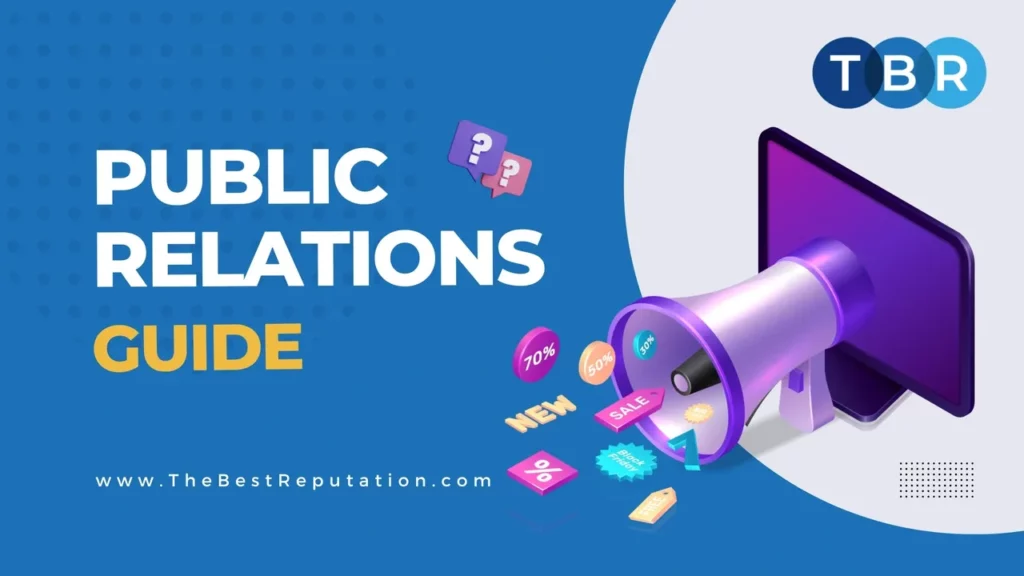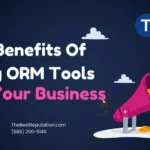TheBestReputation’s Public Relations Guide

TheBestReputation Provides a Guide to Understanding Different Types of Public Relations and Their Functions
In the dynamic world of business, public relations (PR) plays a crucial role in shaping the reputation and identity of any organization. For entrepreneurs, CEOs, and business professionals alike, having a strong PR strategy is key to building and maintaining positive relationships with the public, media, and stakeholders. To fully comprehend the significance of public relations, it is essential to recognize the various types of PR and their respective functions. In this blog post, TheBestReputation delves into four crucial categories of public relations: community PR, media PR, employee PR, and disaster and crisis PR. By grasping their unique characteristics and applications, you can effectively develop an all-encompassing PR approach to elevate your organization’s image and reach.
1) Community Public Relations
The foundation of any business’s reputation begins in its local community. By engaging with the public, participating in local events, and supporting charitable programs, your organization can build a positive image and attract a broader audience. Community PR focuses on fostering strong connections between your business and the public, ensuring that your message resonates with consumers on a grassroots level. This process may involve partnering with local businesses, attending trade shows, and hosting community events to establish your brand as a visible and approachable presence in the area.
2) Media Public Relations
Media PR encompasses strategies aimed at establishing and nurturing relationships with journalists, influencers, and other media professionals. By creating attention-grabbing press releases, engaging interviews, and compelling news stories, media PR helps your organization get the information you want to convey into the hands of the media personnel who can amplify your reach. Ultimately, effective media PR serves to fortify brand awareness, share your side of the story, and create opportunities for further news coverage, delivering a broader and more positive brand exposure.
3) Employee Public Relations
Your organization’s employees are ambassadors of your brand. Employee PR recognizes this reality and develops strategies to present a positive image from the inside out. By fostering a safe, inclusive, and supportive workplace culture, you not only improve employee satisfaction but increase your potential to attract top-tier talent in your industry. Initiatives such as hiring diverse and inclusive teams, providing growth and development opportunities, and promoting a healthy work-life balance are essential in demonstrating your organization’s commitment to employee satisfaction and establishing credibility.
4) Disaster and Crisis Public Relations
In the unfortunate event of a crisis or a damaging scandal, disaster and crisis PR becomes indispensable. This facet of public relations focuses on swiftly responding and regaining control over your organization’s narrative. It may involve issuing public apologies, outlining action plans for improvement, and general damage control. Managing your organization’s response to a crisis includes maintaining open lines of communication with stakeholders, conducting internal investigations, and cooperating with external authorities when needed. By employing effective disaster and crisis PR tactics, you can minimize the impact of negative publicity on your brand while demonstrating accountability and transparency.
Understanding the different types of public relations and their unique functions is essential for any organization looking to build and maintain a strong reputation in today’s fast-paced business environment. By leveraging the power of community PR, media PR, employee PR, and disaster and crisis PR, your organization can successfully establish a positive image, build brand awareness, and create a strategic roadmap for growth. TheBestReputation advises you to keep in mind that no two organizations are the same, and every PR strategy should be tailored to meet specific goals and challenges. By staying well-informed and focused on the nuances of PR functions, you will be well-equipped to tackle any obstacles that threaten your organization’s image and reputation.

